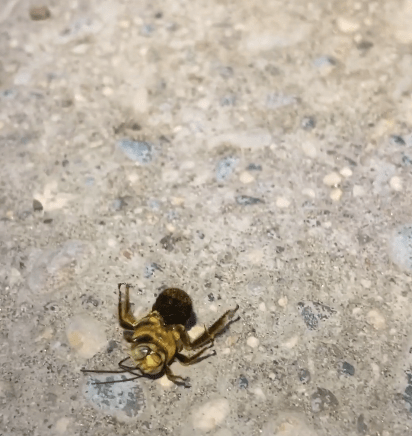
JAMESTOWN, N.D. (NewsDakota.com) – On Saturday, July 11th, the City of Jamestown conducted aerial spraying in order to control the mosquito population.
A notice was sent earlier in the week and advised parents to keep children out of the streets and indoors from 7:45 PM until the application was completed. The City stated that the spray had an active ingredient in the Ultra Low Volume spray called permethrin.
One of the side effects of this permethrin is it can be lethal to bees.
Following the application, video surfaced of native bees dying and spasming roughly 30 minutes after the spraying. One of these videos was taken by Clint Otto of Jamestown.
“Pesticide usage is one of the leading causes of bee declines globally,” he stated. “I know there are other residents who have reported bee kills and others concerned with the timing of the application.”
Otto explained that the bees he had filmed were native and did not belong to any hives in the city.
“Honey bees are just one of 4,000 bee species in the US,” he explained. “There are over 250 native bee species in ND that don’t have hives like a honey bee does. Some native bees, like the ones I filmed, sleep on flowers and are therefore likely candidates for exposure from aerial insecticides. The bees I filmed (genus Megachile) are very different from honey bees (Apis mellifera), but none-the-less important pollinators. When most people consider pesticide impacts, they only think of honey bees; ignoring the other 3,999 species.”
Dawn DeVillers, Vector Control for the City, says she talked to one of the major beekeepers in the area before issuing the aerial spraying.
“He said if people are worried about their bees they should be registered,” DeVillers says. “When they are registered the pilot will not spray in that area.”
If bees do go out of their hives during application, it could affect them she says.
“This is also why we give a 48 hour notice. So if somebody has a small amount of bees they would have time to cover them or take care of them however they need to,” she explained.
Beekeeper Zac Browning owns several hives within the city. He says issues with aerial spraying can be regular and several steps can be taken by an applicator to ensure the bees are not affected.
“If spraying occurs early or late in the day, it’ll be outside of their active times,” Browning says. “Applicators can minimize affect by doing that.”
Browning says drift and proximity must also be kept in consideration when it comes to application.
“If there’s established lines with direct application routes, they can notify these hives so they can be moved or covered,” he says. “Spraying in the wind would be breaking the law because they can’t control the product. They could even end up hundreds of feet off target, damaging adjacent apiaries and other pollinators.”
Browning added they were made aware the spraying was going to happen and says they had no bees in the planned aerial spraying path.
“We talked to city about doing most of it late, which they did. We think they did a nice job,” he added.
For more information on vector control in Jamestown, call 701-320-5503.
Below is some video taken by Clint Otto
